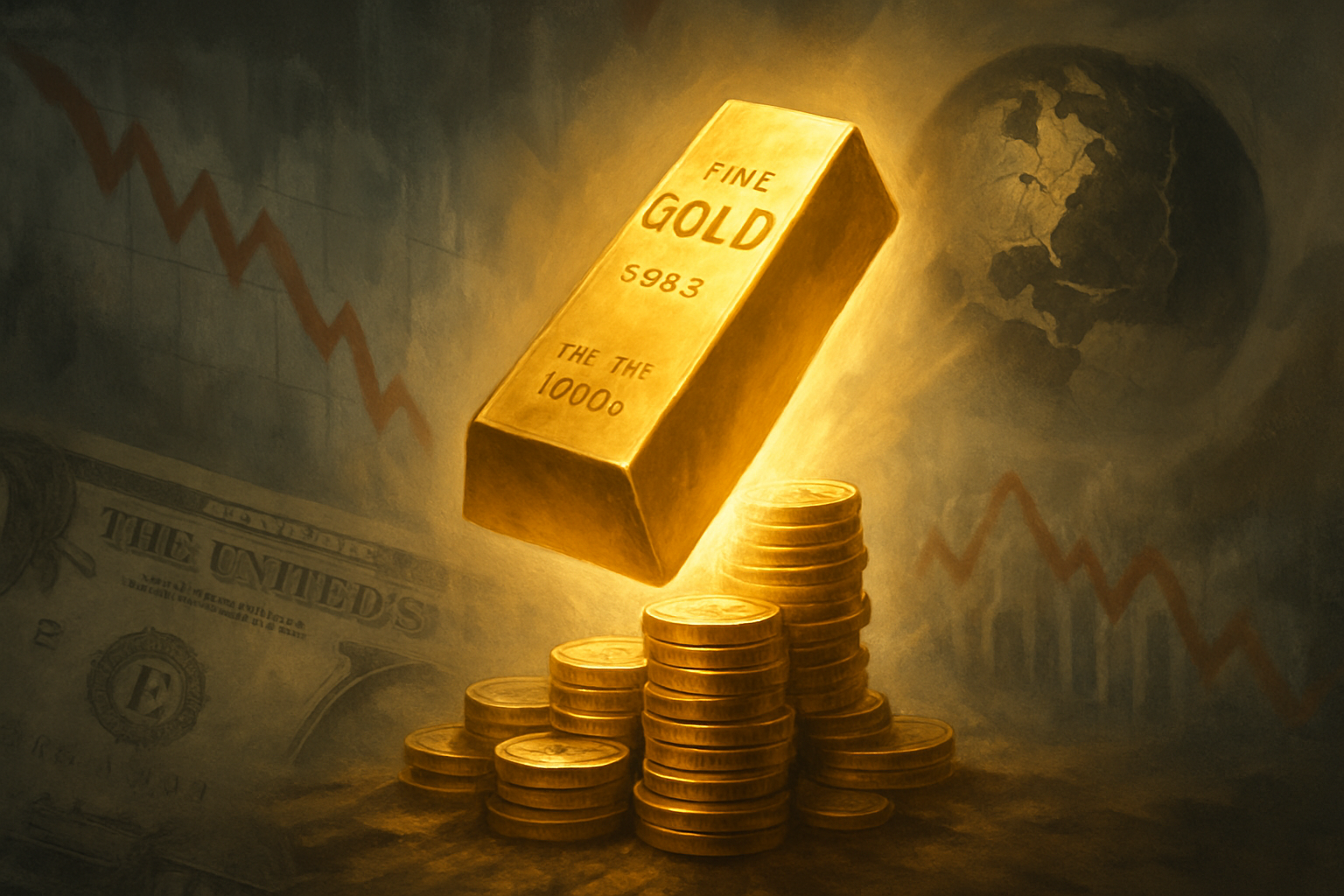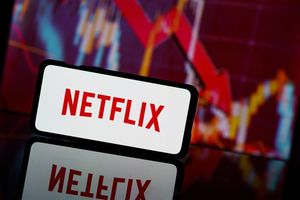
Veteran economist and ardent gold advocate, Peter Schiff, has once again sent ripples through the financial world with his bold prediction: gold could skyrocket to an astonishing $100,000 per ounce. This audacious forecast is not merely a short-term market speculation but rather a dire warning rooted in Schiff's profound skepticism about the U.S. dollar's long-term viability and the stability of the global financial system. Should such a seismic shift occur, it would fundamentally reshape asset allocation strategies, trigger unprecedented market volatility, and signal a widespread loss of confidence in fiat currencies, forcing investors to re-evaluate traditional safe havens.
Schiff's prognosis presents a stark contrast to mainstream financial outlooks, challenging investors to consider a future where the intrinsic value of gold far outstrips the purchasing power of conventional money. His reasoning centers on a perceived impending structural crisis, driven by escalating government debt, relentless money printing by central banks, and the resulting inflationary pressures that he believes will ultimately debase the dollar. For investors, the immediate implication of this forecast, however extreme, is a renewed imperative to scrutinize their portfolios for hedges against currency devaluation and systemic risk, prompting a deeper look into the role of precious metals in a rapidly evolving economic landscape.
The Looming Shadow of a Dollar Collapse: Schiff's Unwavering Conviction
Peter Schiff's $100,000 gold prediction is a culmination of years of consistent warnings about the fragility of the U.S. dollar and the global financial system. While the $100,000 target is a long-term vision, Schiff has provided nearer-term milestones, such as gold reaching $5,000 per ounce by Thanksgiving 2025 and $6,000 by Christmas 2025, underscoring his belief in an accelerating trend. He has even controversially suggested that gold is more likely to hit $1 million per ounce than Bitcoin, highlighting his profound conviction in gold's ultimate role as a store of value.
His arguments trace back to the aftermath of the 2008 financial crisis, when unprecedented quantitative easing measures were first deployed. Schiff consistently argued that these policies were merely kicking the can down the road, creating an even larger bubble destined to burst. He points to the ever-expanding U.S. national debt, now exceeding $37 trillion, as undeniable evidence of unsustainable fiscal policies. This, coupled with what he views as unchecked government spending and the Federal Reserve's accommodative monetary stance, forms the bedrock of his hyperinflationary outlook.
Key players in this ongoing economic debate include not only Schiff himself but also central banks globally, whose gold buying sprees have intensified in recent years, signaling a subtle but significant shift away from dollar reliance as a primary reserve asset. Other prominent economists, while often not aligning with Schiff's extreme price targets, do acknowledge the growing concerns around inflation and sovereign debt. Initial market reactions to such a high-value, long-term gold forecast are typically mixed, with many mainstream analysts viewing it as an outlier scenario requiring extreme global disruptions, such as hyperinflation or a complete monetary collapse. However, a growing segment of investors, wary of persistent inflation and geopolitical instability, are increasingly considering gold as a crucial portfolio component, even if they don't subscribe to Schiff's most aggressive targets. The ongoing debate between inflation hawks and those who believe central banks can manage price stability remains a central theme, with Schiff firmly entrenched in the former camp, projecting a future where the dollar's demise is gold's ultimate triumph.
Gold's Gilded Path: Winners and Losers in a $100,000 Scenario
A scenario where gold ascends to $100,000 per ounce would undoubtedly trigger a dramatic redistribution of wealth and profoundly impact various sectors and public companies. The most obvious beneficiaries would be gold mining companies and precious metals dealers. Companies like Barrick Gold (NYSE: GOLD), Newmont Corporation (NYSE: NEM), and Agnico Eagle Mines (NYSE: AEM) would see their revenues and profitability skyrocket. Their existing reserves, valued at current market prices, would become exponentially more valuable, leading to massive balance sheet appreciation and potentially significant dividend payouts. Exploration companies, even those with early-stage projects, could find their assets suddenly worth billions. Exchange-Traded Funds (ETFs) focused on gold, such as the SPDR Gold Shares (NYSEARCA: GLD), would experience unprecedented inflows and asset value growth.
Conversely, companies heavily reliant on a stable dollar and low inflation would face immense pressure. Consumer discretionary companies (e.g., Amazon (NASDAQ: AMZN), Tesla (NASDAQ: TSLA)) could suffer as consumer purchasing power erodes, leading to reduced demand for non-essential goods and services. Financial institutions (e.g., JPMorgan Chase (NYSE: JPM), Bank of America (NYSE: BAC)) would grapple with systemic instability, potential defaults on loans, and a flight from traditional financial products as confidence in fiat currency wanes. Companies with significant debt burdens, particularly those denominated in U.S. dollars, would find their liabilities increasingly difficult to service as the dollar's value plummets. Furthermore, sectors like technology (NASDAQ: QQQ), which often thrive in periods of economic stability and innovation, might see a significant capital rotation out of growth stocks and into tangible assets, impacting valuations across the board. The impact would not be uniform, but the general trend would be a flight from paper assets and a surge into real assets, with gold leading the charge.
The Broader Economic Quake: Gold's Role in a Shifting Paradigm
Peter Schiff's $100,000 gold prediction, while extreme, fits into a broader tapestry of economic concerns that have been gaining traction globally. His arguments resonate with a growing sentiment that current monetary policies, characterized by expansive quantitative easing and ballooning national debts, are unsustainable. This event, if it were to unfold, would signify a monumental shift in global financial architecture, moving away from a dollar-centric reserve system towards a more diversified, potentially gold-backed, one.
The wider significance extends to profound ripple effects across various industries. Competitors to gold, such as other safe-haven assets like government bonds, would likely see their appeal diminish dramatically if the underlying fiat currency is perceived as unstable. Partners in international trade would face unprecedented currency volatility, potentially leading to a fragmentation of global supply chains and a resurgence of protectionist policies. Regulatory bodies would be forced to confront systemic risks on an unparalleled scale, possibly leading to drastic reforms in monetary policy and banking regulations. Historically, gold has served as a safe haven during periods of economic and political turmoil, from the Great Depression to the 1970s stagflation. However, a $100,000 gold price would imply a crisis of confidence far surpassing these historical precedents, suggesting a fundamental re-evaluation of how value is stored and exchanged globally. This scenario would not merely be an economic event but a geopolitical one, as nations scramble to secure tangible assets and protect their wealth amidst a collapsing fiat currency system.
Navigating the Golden Tsunami: What Comes Next?
Should Peter Schiff's prediction of gold reaching $100,000 materialize, the short-term and long-term implications would be nothing short of revolutionary for financial markets. In the short term, such a rapid ascent would likely trigger extreme market dislocation. We would see a mass exodus from traditional equity and bond markets, as investors rush to convert depreciating fiat currency into physical gold and gold-related assets. This would create immense volatility, with daily price swings in gold and other commodities reaching unprecedented levels. Central banks, already net buyers of gold, would likely accelerate their purchases, further fueling the rally and signaling a global shift in reserve asset strategy.
In the long term, a $100,000 gold price would signify a complete paradigm shift in the global monetary order. The U.S. dollar's role as the world's reserve currency would likely be severely diminished, if not entirely replaced. This would necessitate significant strategic pivots for governments, corporations, and individuals. Countries would need to re-evaluate their trade relationships and payment systems, potentially exploring alternative currencies or even a return to a gold standard. Market opportunities would emerge for innovative financial products designed to hedge against currency collapse and facilitate transactions in a multi-polar monetary environment. However, challenges would be equally immense, including widespread economic instability, potential social unrest due to hyperinflation, and a fundamental reordering of global power dynamics. Potential scenarios range from a controlled, albeit painful, transition to a new monetary system to a chaotic collapse of existing financial structures.
The Ultimate Hedge: A Summary of Schiff's Vision and Investor Outlook
Peter Schiff's audacious prediction of gold soaring to $100,000 per ounce is a stark warning embedded within a long-standing critique of modern monetary policy and the inherent vulnerabilities of fiat currencies. His core argument posits that escalating government debt, relentless money printing, and subsequent inflation will inevitably lead to a catastrophic devaluation of the U.S. dollar, with gold serving as the ultimate refuge and true store of value. This forecast, while considered extreme by many, underscores a critical debate about the future of global finance and the stability of traditional economic frameworks.
Moving forward, investors should closely monitor several key indicators. The trajectory of national debt and government spending, particularly in major economies like the U.S., will be crucial. Inflation rates, especially persistent and accelerating increases in consumer prices, would lend credence to Schiff's outlook. Furthermore, the actions of central banks, particularly their gold acquisition patterns and any shifts in their reserve asset allocations, will provide valuable insights into evolving global monetary dynamics. While a $100,000 gold price represents an extreme scenario, the underlying concerns about currency debasement and systemic risk are increasingly pertinent. Investors seeking to capitalize on such an outlook, or simply to hedge against potential financial instability, might consider allocating a portion of their portfolios to physical gold, gold mining stocks, and gold-backed ETFs. The lasting impact of Schiff's vision, even if his most extreme predictions don't fully materialize, lies in its persistent challenge to conventional wisdom and its powerful reminder of gold's historical role as a bulwark against economic uncertainty.
This content is intended for informational purposes only and is not financial advice





